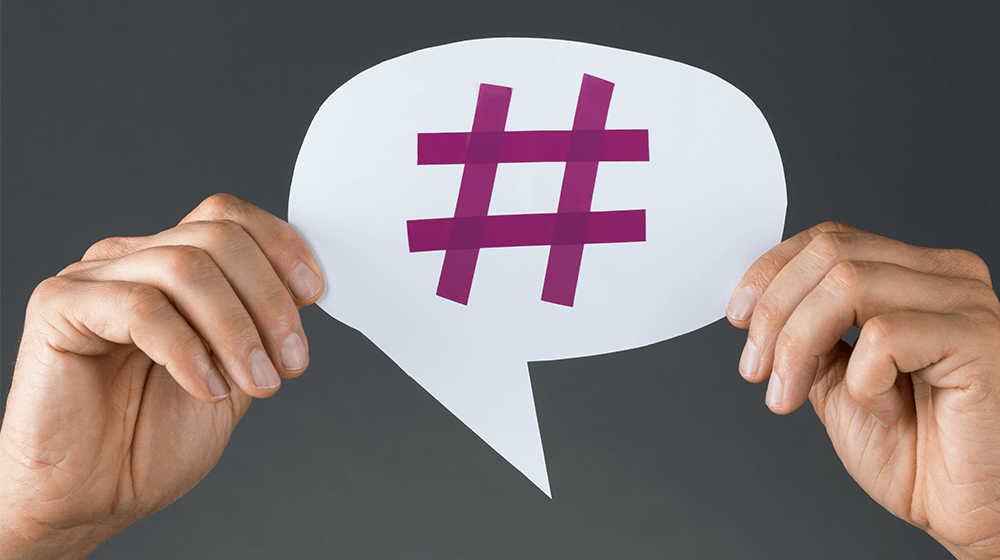
Some 75% of customers say they are unlikely to post content with a branded hashtag from a company, according to Visual Objects. This comes at the heels of businesses are ramping their marketing efforts to get customers to come back and start buying.
A key strategy that businesses are seeking to renew and strengthen attachments is through user-generated content. Through the content, businesses encourage customers to engage and create their own content on behalf of a company. The content could be a social media update including reviews, hashtags, videos, podcasts, or any other material.
Visual Objects Survey on Branded Hashtags
User-generated content can go a long way to help not only create a buzz but also act as endorsements from fellow customers. This comes in handy as businesses face an economic downturn and marketing budget cuts. According to Influencer Marketing Hub, 69% of brands expect to decrease ad spending in 2020.
As in-house resources and economic downturn put financial pressure on businesses, companies should leverage user-generated content to promote their products and services. Visual Objects surveyed some 401 people across the U.S. and found that people are reluctant to create content on behalf of brands. In fact, only 22% of people say they are likely to create a blog post on behalf of a business
However, Visual Objects says businesses can incentivize and motivate customers to engage with their products online. It offers five examples of brands that have nailed user-generated content around the web and explains how other businesses can do the same.
5 Ways to get Your Customer to Advocate for You
Encourage User-Generated Hashtags
Businesses can incentivize customers to use a hashtag by offering a prize. For example, Birdy Grey sells bridesmaids dresses directly to consumers and encourages the hashtag #birdyinthewild. It uses the hashtag to help drive awareness of its products among wedding industry audiences. These include brides and bridesmaids; and wedding vendors such as photographers, venues, florists.
Customers who post on Instagram using Birdy Grey’s hashtag get a chance to feature on Birdy Grey’s website. The result is that Birdy Grey Instagram account garnered just over 70,000 followers. The free publicity for wedding vendors, particularly photographers looking to earn new business helped drive traffic to Birdy Grey.
Like Birdy Grey, businesses can help create a mutually beneficial marketing ecosystem by providing incentives for helping in marketing drives.
Recruit Guest Writers
Invite customers to contribute to writing posts to promote a business. By encouraging guest writing, businesses can use their services to further leverage their goods and services. In the trade-off, both businesses and writers can benefit from the guest posts.
The free content helps companies to build loyalty as well as boost Search Engine Optimization (SEO). In addition, businesses do not have to invest time in creating original content. In return, guest writers help promote the brand as well as improve their craft and increase their audience.
Encourage Product Reviews
For a company, positive reviews are very important. Reviews help customers decide on using your services; they prove your credibility as well as improve your visibility. Reviews for consumers not only provide glossy testaments but also present the worst-case scenarios as well. Besides helping in purchasing decisions for fellow customers they provide new perspectives from the end-user.
Positive reviews provide social proof that businesses can deliver a quality product, backing up claims made in marketing materials. Ratings can also give you more exposure online in terms of SEO which is something that businesses should leverage.
Embrace New Social Media
TikTok is taking viral marketing by storm. With it, businesses can discover and amplify user-generated content among younger demographics. Though 81% say they are unlikely to create a video for a product, they however do create videos featuring popular products on TikTok.
By encouraging customers to produce, comical content through challenges you can help reach out to younger customers and stay relevant.
Look for Influencers
YouTube is perhaps the most popular social media tool. Creating marketing videos can be a costly task. In addition, it takes time, money and labor. Only 26% of customers are likely to review a product or business on a third-party platform. However, influencers are looking to make connections and help their followers get insights into issues- this includes products and services.
By working with influencers, you can use their status as opinion leaders to increase the awareness of your brand. You can collaborate with influencers to help produce unboxing videos or even product reviews. And you can use promotions and discounts to encourage others to try out your products.
Bottom line
In this competitive business environment, traditional advertising no longer cuts it. People today are forming their own micro-communities through social media platforms to further engage with likeminded individuals.
Biasness’s need to maneuver themselves to reach out to their customers through these micro-communities. Reaching out is just half of the task because they will also need to have frequent and productive engagements with their customers. This means encouraging and incentivizing user-generated content.
Businesses can encourage reviews with free product samples, future discounts, or sweepstakes entries. They can collaborate with their customers to produce compelling content to push forward the brand and its products. This helps not only marketing but also allows customers the opportunity to have their voices heard.
Image: Depositphotos.com
This article, “75% of Customers Unlikely to Use a Branded Hashtag to Promote Your Business” was first published on Small Business Trends